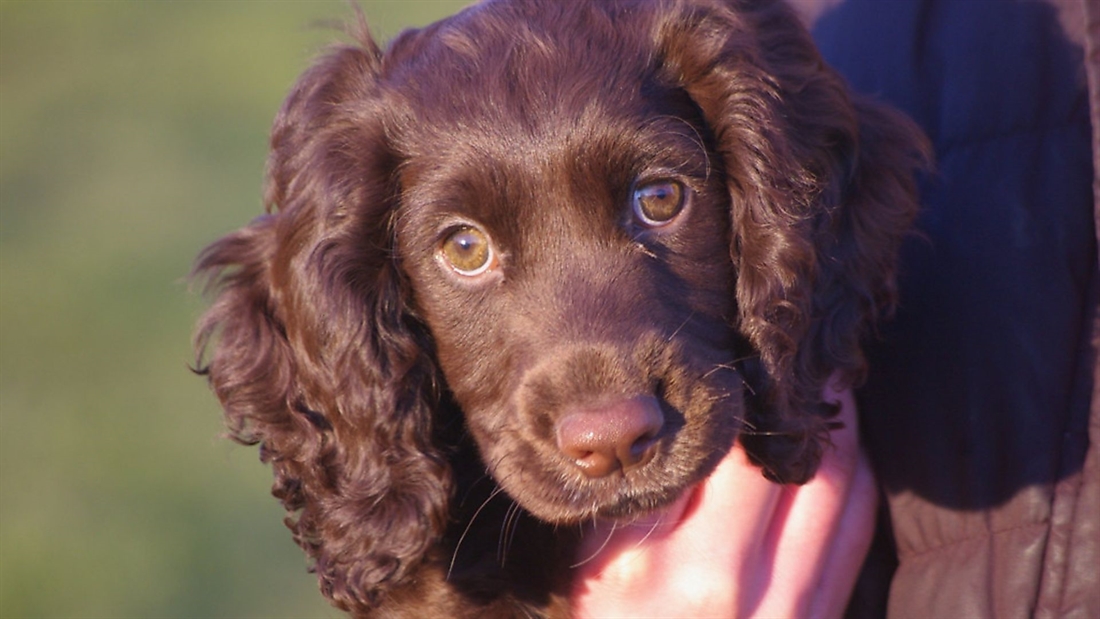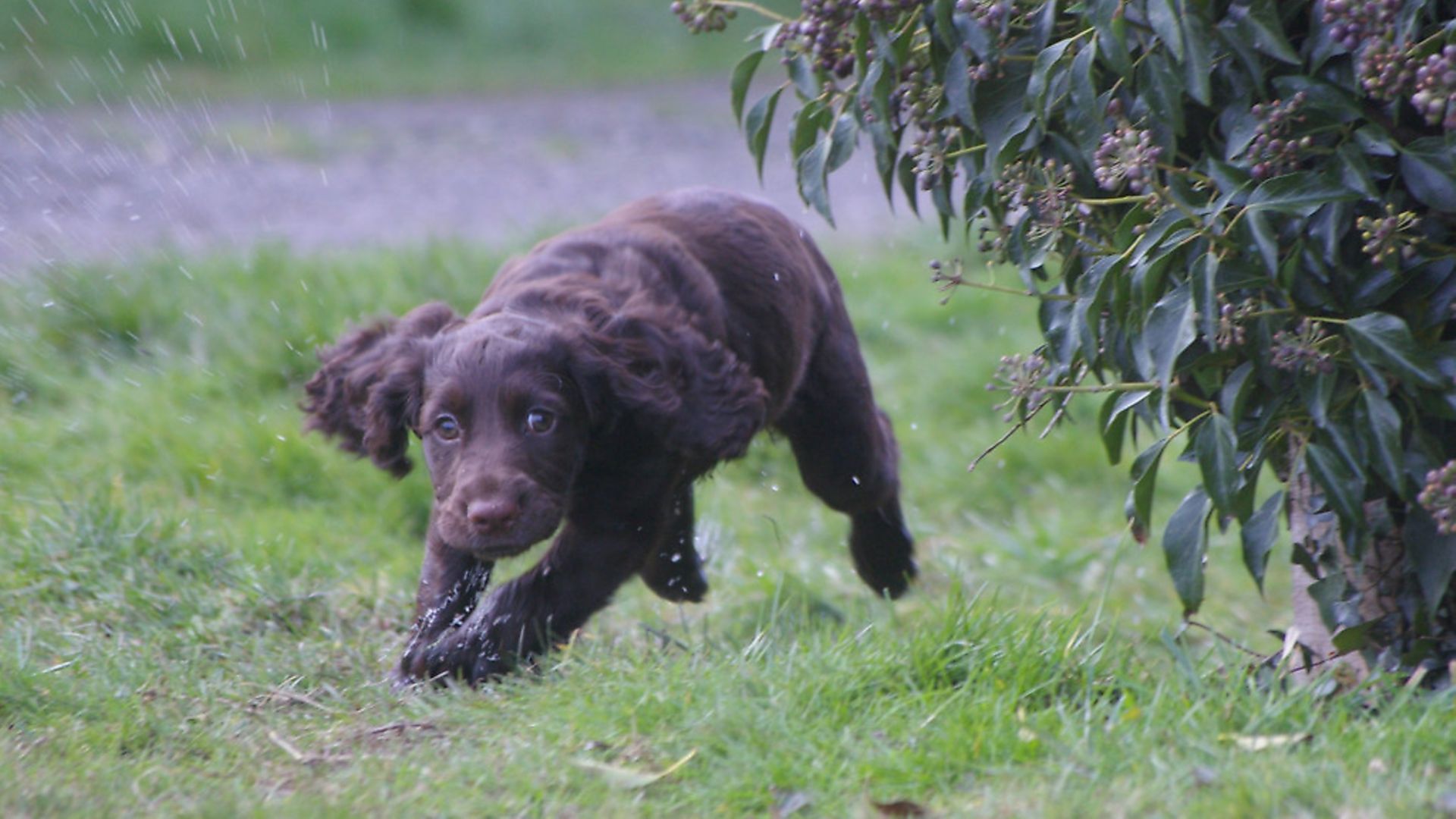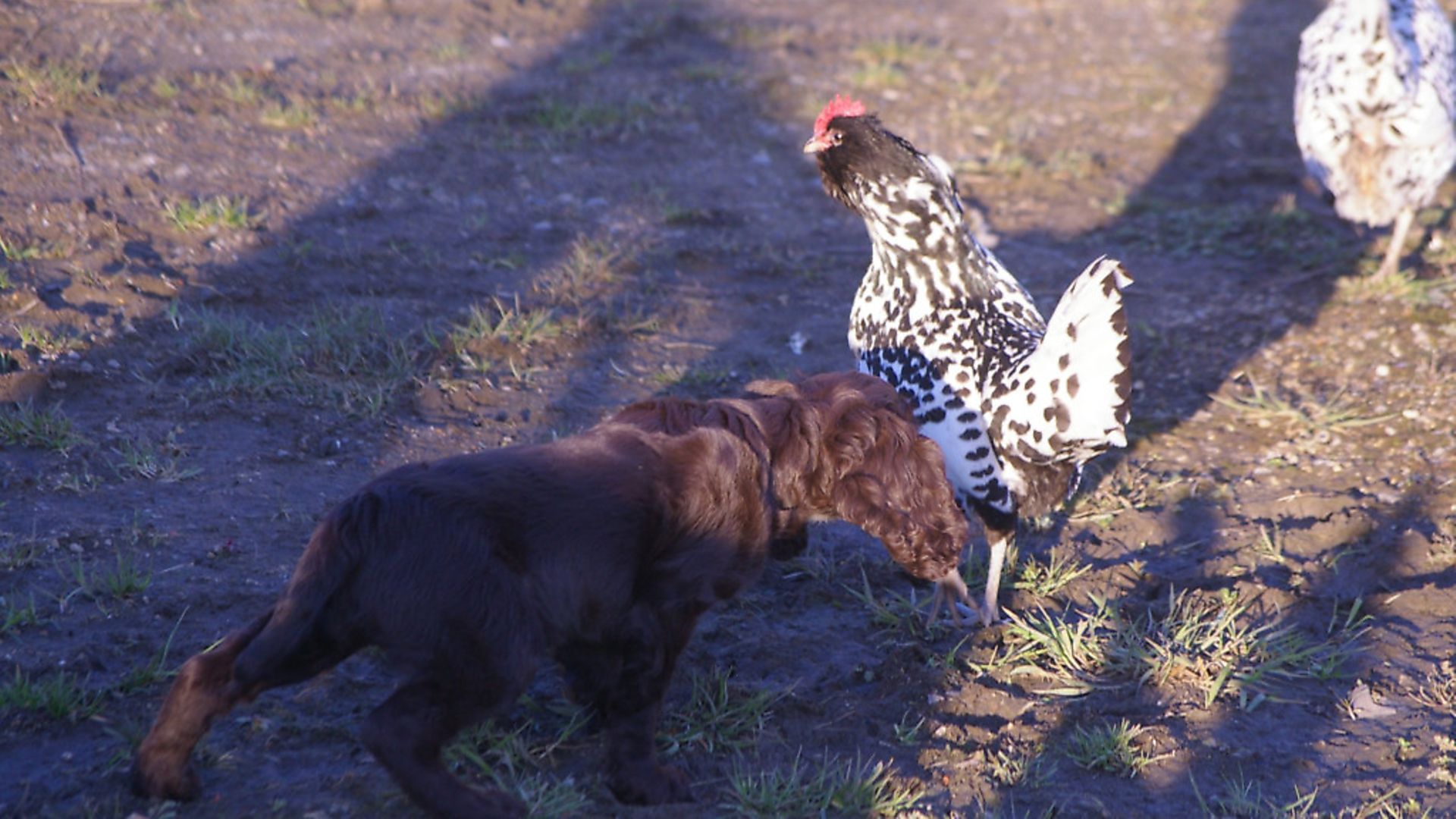Gundog puppies: from breeding to early training

Ryan discusses the breeding decisions he makes with his cockers, taking us from mating, through birth, and on to those crucial early days with your new pup
Without a doubt, the best time of year to have a new puppy is springtime! It just works out on so many levels, especially when it comes to the training side of things. By the time the season comes along, much of the basics should be in place and you can start some careful introductions to the delights of a shoot day.
Last year here at Farlavale, we planned a particular litter and were looking forward to the results of what we thought would be a perfect match. Our orange roan bitch Seren was mated to our FTCH Charlie and she was soon scanned to be pregnant, carrying at least five pups, due to whelp around Christmas Eve. The decision of mating both Seren and Charlie was an obvious one to us, as both had a lot to offer but Charlie would hopefully bring some biddabilty to the offspring, an area that Seren has lacked in at times. Although she’s showed marvellous natural hunting ability and has picked up a few Field Trial awards, Seren wrestles with keeping connected. You can almost see the cogs working as she focuses on the scent in front of her nose while her brain struggles with trying to listen to my commands from behind her at the same time. It’s a fine balance and I see it in many dogs that behave the same. I suppose you could say it’s highlighted as being wilful, but I believe it’s sometimes more to do with genetics and the right type of brain – a brain that can multi-task, the dog carrying out fluent hunting in front of its handler and listening to the instructions given at the same time from behind. Charlie has that right brain. He’s also a problem solver and an eager to please sort, that constantly wants to learn things from his handler. His eyes look straight into mine, whereas Seren’s look through me to the back of my head!
Anyway, the exciting prospect of some lovely pups to look over and bring on was soon halted as an emergency caesarean a few days before Christmas (and out of hours of course) was on the cards. Seren was in labour and as soon as I saw her pushing, I took a closer look to see a sizeable paw emerging, but it appeared dry and not encased in the necessary embryotic sack. This did not bode well and no amount of wiggling and pulling from me was exposing any more of the unborn pup. We dashed her into the vets only for the vet to also fail in manually freeing the pup, so there was no choice but to go down the caesarean route. In the end, Seren had just two pups, with the likely scenario that three had been reabsorbed soon after the scan. The remaining two were then allowed to grow bigger than they would have, had there still been five embryos in the womb. The result was two large pups that were basically too big to pass through the birth canal, causing the first pup that we tried to free to die in the struggle to emerge. It is sadly one of the perils of breeding, and although the majority of the time everything goes to plan, occasionally it just doesn’t. Yet all was not lost, as there was another healthy pup tucked away up in the womb; a lovely liver bitch with a smart white/roaning bib. I had intended to keep a dog pup, but with this little lass being the only survivor, she was soon, and rather aptly, named ‘Solo’.
What to expect
Seren bounced back quickly from her ordeal and set about nurturing Solo, and as there were no competing siblings, Solo was spoilt with an open milk bar. This mating from Charlie and Seren is effectively an outcross of sorts. Seren, according to the Kennel Club’s coefficency of inbreeding calculator is approximately 30% inbred and Charlie 17% inbred, giving Solo a COI (coefficiency of inbreeding rate) of around 16%; which is what I roughly guess the breed average for working cockers to be. The actual COI for show and working cockers combined is 10.3%.
Now, I have my own views on inbreeding rates, and it’s not about trying to keep them as low as possible, it’s more about making decisions by using your eyes. I’ve always said that aside from having the relevant health tests for the breed done, our eyes are the best tools we have when making breeding decisions, and having bought both Seren and Charlie as pups, I’ve trained them to a worthy standard and witnessed everything they’ve both had to offer – either good or bad! So the fact that Charlie has progressed to becoming a Field Trial champion, has probably little to do with him having the lower inbreeding rate, but with Seren, her breeders’ quest to ‘line breed’ as it were, and to keep desirable traits solidly within her genes, has inevitably meant that there are also some small undesirable traits solidly within her genes. Had I used a different stud dog – one that was very closely related to her – there would have also been a much greater chance of all the pups displaying those small traits as the undesirable genes would perhaps be coming from both parents. This would be a perfect example of doing the same thing over and over and expecting different results, which as we all know is the definition of insanity! Like I say, Seren has some fabulous engrained natural ability, passed down from years of good breeding, but it’s about balancing out some of those slight nuances, so by using Charlie, I am hoping that he passes on his more wanted traits to the offspring and we end up with a new suitable example of the breed.
There is just one problem, however: the problem being that I don’t have a choice of pups! Ideally, I’d have a litter to choose from, enabling me to select a stand-out pup, displaying all the right behaviour. Moreover, there’s nothing to say that little Solo won’t be a chip off the old block from her mum Seren, and I’ll end up with a very similar bitch, talented but not an improvement!
So far though, at least, it appears that she has thankfully inherited good traits from both her parents. I’m sure that there’ll be something that’ll pop up along the way, something unwanted that will have been carried over from either parent, but then if that didn’t happen, I’d have no traits to try and breed out, or breed in next time, and all cockers would be perfect examples! The quest to breed the perfect example will always go on, more carefully and responsibly by some breeders than others, it has to be said.
Many readers will also have purchased a pup at this time of year, so I’ll explain what I do, how I bring a young pup on at this stage and at this time of year. All dogs are different, but one of the advantages of ‘line breeding’, as I mentioned above, is there’s more chance of pups emerging like peas in a pod, with similar personalities and learning habits. I see a lot of cockers here at Farlavale, and I can often tell the breeding of a certain dog in front of me before I know its pedigree. I’m certain many other trainers see the same traits from particular lines with a certain breed also and will adapt their training methods and regime accordingly. I have seen and trained a lot of Charlie’s offspring over recent years, so I half know what to expect and how quickly they usually progress. If you’re following what I’m doing, please don’t expect your dog to move along at the same rate, as your pup may be a quicker learner and be ready for the next step sooner than Solo, or be a little slower on the uptake and will move along at a more methodical pace. Either way, I’ll provide tips and updates in future issues, with information as to what I’ve done and exposed her to. What you do with the info is up to you.
Bonding with your puppy
People sometimes talk about bonding as if it’s the solution to all trained dogs, as if they gave birth to the pup themselves and if the dog misbehaves, then not bonding properly is to blame! It’s more about consistency and being clear with your young pup. If you decide when exciting things happen, rather than the dog finding out stuff without your input, you will be more important to it – it’s that simple. If you are of value to the pup, the provider of all the good fun stuff, the interactor, the source, then you will be the Mecca… let’s call that ‘bonding’ shall we?
Solo is now around 12 weeks old and she’s already had an eventful life. I like to try and get a pup out and about as soon as possible, but with the current popular Lepto 4 vaccination being offered over the regular Lepto 2, the time required in between initial jabs is four weeks and with a week to 10 days after that before total protection is given, a pup could be 13-14 weeks old before it’s allowed to really venture, and for me, that’s an important chunk of early learning time it could be missing out on. So, until I hear from vets here in York at least, that they’re experiencing cases of Leptospirosis that are from the two strains that the Lepto 2 vaccine doesn’t include, then I’ll tend to continue with Lepto 2. The main reason being that Solo received her first vaccination of L2 at 7 weeks old and her second jab at 9 weeks (just a two-week gap required), she was then good to go and experience the world at around 10 weeks old. Just these few weeks extra head start are hugely important and a chunk of time that I feel shouldn’t be missed out on. In that extra time, Solo has experienced puppy socialisation classes at the vets on an evening, met animals such as chickens, ducks and horses, moving vehicles like cars, trucks and tractors etc.. and she’s even experienced gentle cover – in the form of grasses and laurel bushes. It was all kept low key and measured, from my part at least, but she found it all very exciting and fun. I tend to keep a watchful eye for her responses and talk to her in a soft but cheerful tone to add some assurance.







